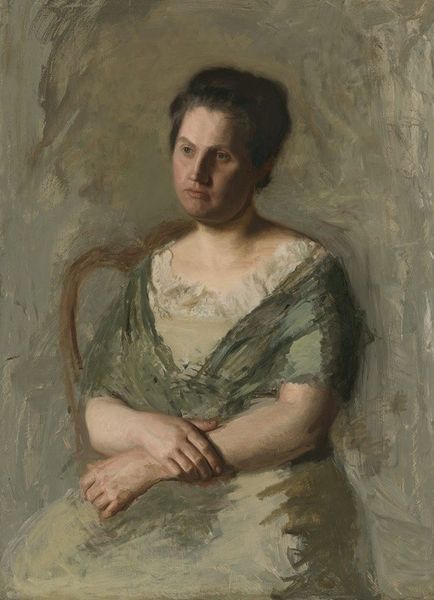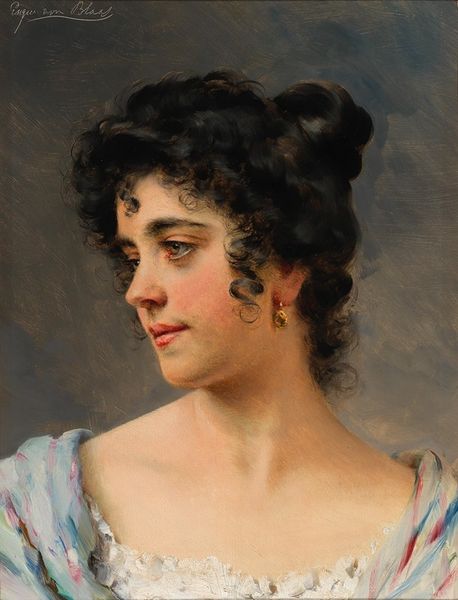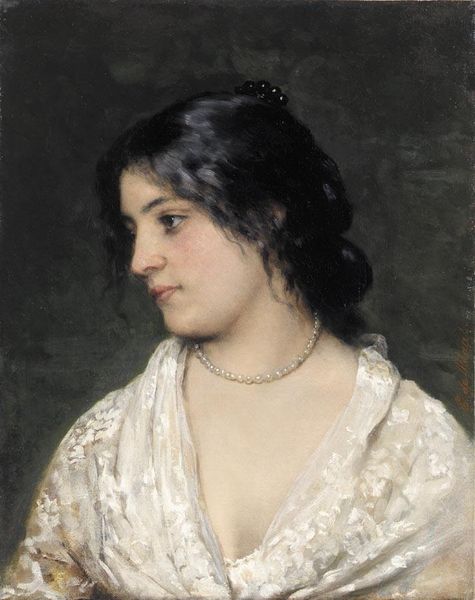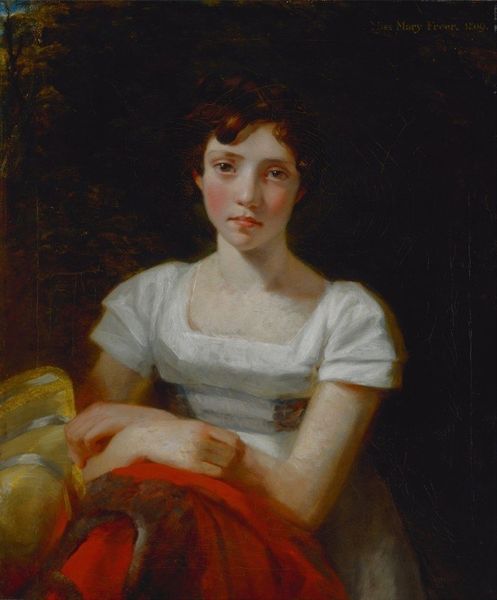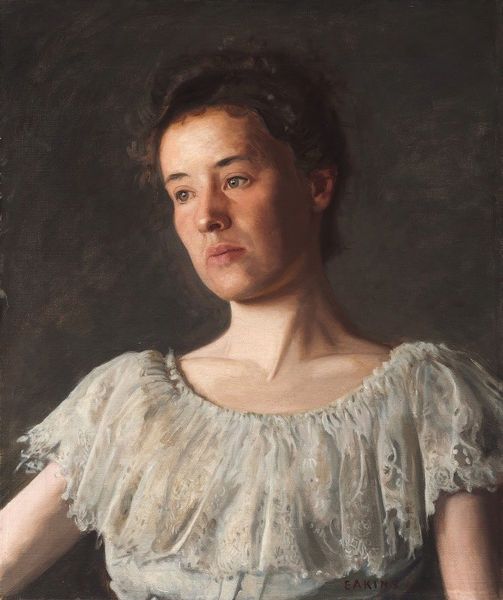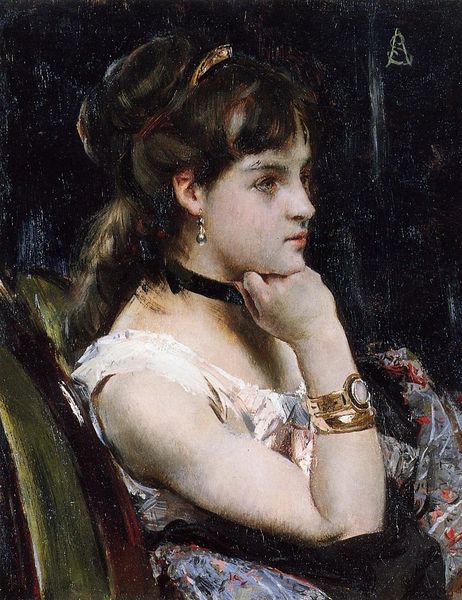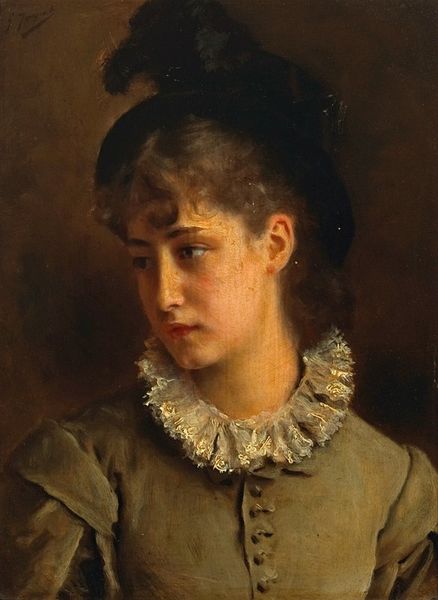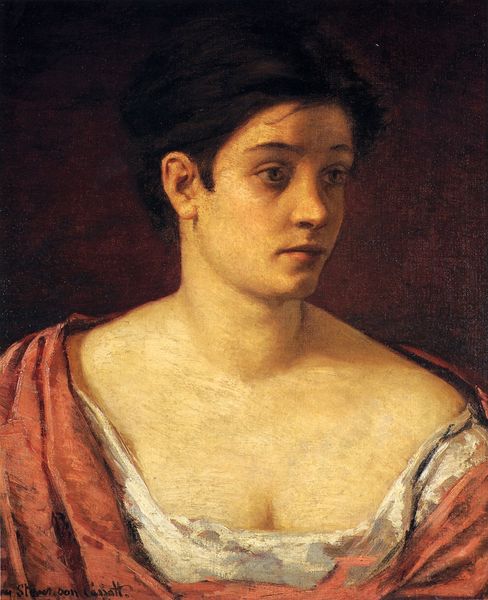
painting, oil-paint
#
portrait
#
painting
#
oil-paint
#
realism
Copyright: Public domain
Curator: Here we have Thomas Eakins' "Portrait of Lucy Lewis," an oil painting created in 1896. Editor: The painting strikes me as incredibly intimate. There's this vulnerability in her eyes that pulls you right in. It feels…soft, somehow. Like a whispered secret. Curator: Eakins often explored realism in his portraits, seeking to capture not just physical likeness but also the sitter's inner life. Consider the gaze: is it confrontational, demure, perhaps even melancholic? It begs so many questions about Lucy's identity. What do we know about her place in society during that period? How did prevailing gender norms shape her life, her expectations? Editor: And isn't it gorgeous how he paints that fabric? The textures almost dance – light seems to melt into the folds, contrasting the seriousness of her expression. It makes me wonder if she chose the dress, if it reflects something about her own artistry, how she sees herself. It almost seems like it has its own story to tell separate from hers, even though it’s connected. Curator: Exactly. Representation in portraiture wasn't merely about aesthetics; it was a complex interplay of power dynamics, societal expectations, and individual agency. Examining Lucy's social standing through historical records helps us understand the choices available to her, the constraints she faced. We should see it, as well, alongside discussions about portraiture's inherent politics – who gets to be immortalized in art, and what messages does that convey to us as observers. Editor: I love the slight blurriness of the background too. Like she’s emerging from the shadows, demanding our attention. A bit haunting in a way... Did Eakins do that intentionally? Like the whole composition has this emotional depth. The kind where the technical skill is less important than its emotional weight. Curator: Art historians might debate his intentions, analyze brushstrokes and compositional choices. Ultimately, art becomes meaningful only when we engage critically with these historical frameworks. By unpacking assumptions, challenging biases, we are able to arrive at new meanings. Editor: Well, to me it suggests there’s more to her story than meets the eye. More secrets in the dark. This has inspired me.
Comments
No comments
Be the first to comment and join the conversation on the ultimate creative platform.
